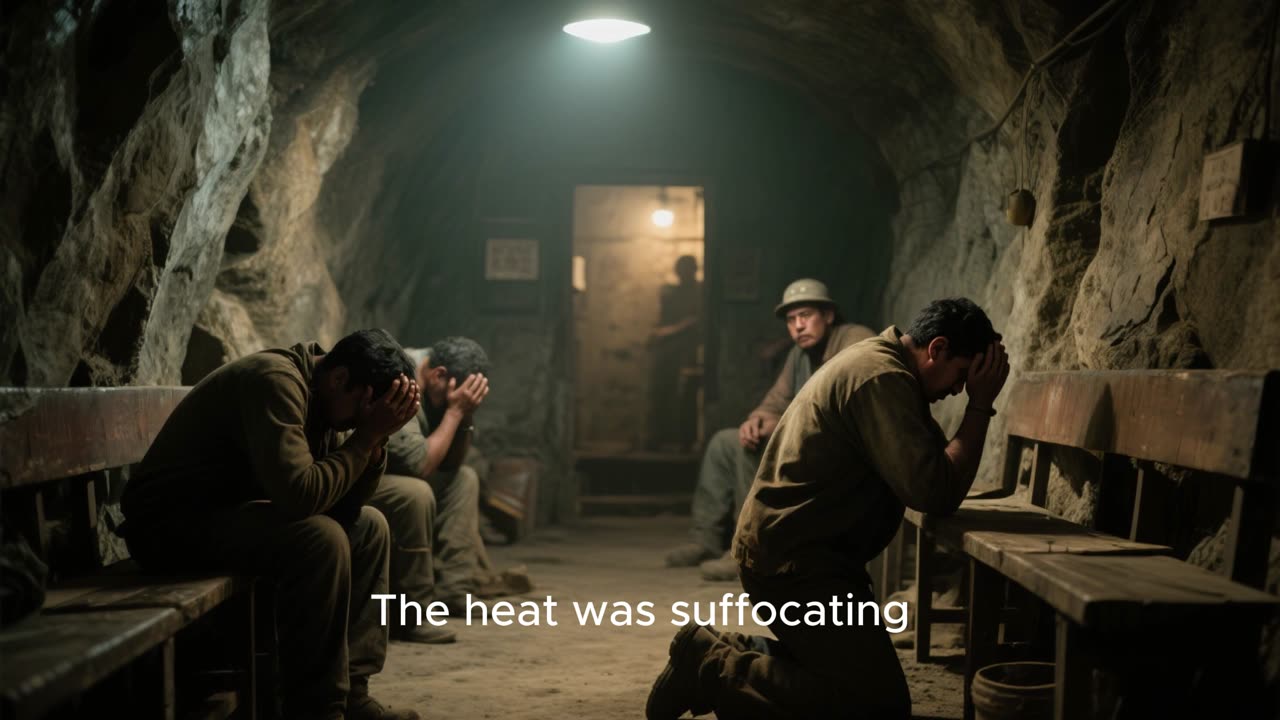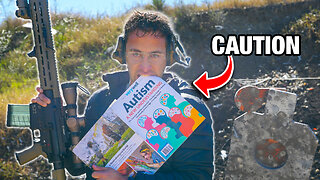Premium Only Content

Lost Beneath the Earth
The Incredible Rescue of the Chilean Miners
In the heart of the Atacama Desert in Chile, the air is dry as bone, and the land stretches endlessly, cracked and lifeless beneath a sun that never softens. Deep below this ancient dust lies a labyrinth of tunnels — the San José copper and gold mine — where men descend each day into the earth’s belly, trading sunlight for survival. On the morning of August 5, 2010, thirty-three miners began their shift, unaware that within hours, the mountain would swallow them whole.
The San José mine was old, stubborn, and scarred by decades of drilling. Its tunnels wound like veins through unstable rock. That afternoon, as the men worked more than 700 meters below ground, the walls began to tremble. A distant groan rolled through the darkness, growing louder, heavier, until suddenly, the earth roared. In an instant, 700,000 tons of rock came crashing down. Dust choked the tunnels, and a wind like thunder screamed through the chambers as the mountain collapsed, sealing every exit.
When the rumbling stopped, silence reigned — the kind of silence that presses on the chest like weight. The men looked around, dazed, covered in dust, coughing, shouting names. Their lamps flickered against the jagged walls. They realized quickly — the main ramp was gone, blocked by hundreds of feet of stone. They were trapped, deeper than anyone had ever survived before.
Their leader, Luis Urzúa, gathered them in the refuge chamber — a small room with a few metal benches, an emergency kit, and enough food for maybe three days. They had no idea if anyone above even knew they were alive. The heat was suffocating, the air stale and heavy. Some cried, some prayed, others simply stared at the walls in disbelief.
Above ground, the rescue teams arrived to find the entrance buried in a mountain of rubble. The miners’ families gathered at the site, refusing to leave, building makeshift camps they called Campamento Esperanza — Camp Hope. Drills were brought in, but the rock was too dense. The rescuers could not even hear signs of life from below.
For the men underground, days turned to nights without distinction. They rationed food — one spoon of tuna, a sip of milk, a piece of cracker every 48 hours. They drank water from radiators. The air grew foul, the heat unbearable. Hope faded with each passing day. Some wanted to dig their way out, others said it was useless. Yet through it all, Urzúa demanded order — work shifts, prayers, discipline. “We are still alive,” he told them, “and as long as we breathe, we fight.”
Seventeen days passed. Then, a miracle. A drill bit, searching for any sign of the men, broke through a small section of tunnel wall. When the rescuers pulled it up, they found a note taped to the tip, written in red ink on a piece of dirty paper:
“Estamos bien en el refugio los 33.”
We are well in the refuge, the 33 of us.
The world erupted in disbelief and joy. Cameras flashed, tears fell, and suddenly, hope was no longer a word — it was a fact. Engineers from across the globe came together to design an impossible rescue. The plan: to drill a shaft wide enough to lift each man to the surface, one by one, without the mountain collapsing again.
Down below, the men survived through faith, humor, and sheer stubbornness. They sang, told stories, and took turns recording messages for their families. They endured collapsing walls, exhaustion, infections, and the constant terror that the earth might betray them once more.
For 69 days, they lived in the heart of darkness. Then, on October 13, 2010, a steel capsule called Phoenix descended through the shaft. The first man, Florencio Ávalos, stepped inside, strapped in, and began the long, trembling journey upward. As the capsule rose, the miners sang. When it finally broke through to the surface, lights blazed, sirens wailed, and the world watched as a man emerged from the earth reborn.
One by one, they followed — all thirty-three of them. Some wept, others laughed uncontrollably. One knelt and kissed the ground. Their families embraced them, crying as if the dead had returned.
In total, the operation took 22 hours to complete. Not a single life was lost. The Chilean miners became symbols of endurance and unity, proof that even when buried under the weight of the world, hope can dig its way to daylight.
When asked later how they survived, one miner simply said, “There were not 33 of us. There were 34 — because God never left that mine.”
Their story remains one of the greatest rescues in human history, a reminder that courage can thrive in the deepest dark, and that when people above and below refuse to give up, even the earth itself must let go.
-
 28:53
28:53
iCkEdMeL
15 hours agoBREAKING: 9 DEAD After UPS Plane BURSTS Into Fireball at Louisville Airport
21.6K7 -
 20:52
20:52
Professor Nez
18 hours agoThe TRUTH is Actually WORSE than we Thought...
9.26K18 -
 8:59
8:59
MattMorseTV
17 hours ago $0.05 earnedTrump’s DIRE WARNING to the Senate GOP.
72.7K81 -
 2:13:33
2:13:33
Side Scrollers Podcast
19 hours agoAsmongold SUED for Emotional Distress + Hasan REJECTED+ INSANE Plane Crash + More | Side Scrollers
87.4K24 -
 21:39
21:39
Nikko Ortiz
4 days agoI Take A North Korean Shooting
79.8K11 -
 23:01
23:01
GritsGG
17 hours agoWarzone Solo Dubular! Last Night Time Solo???
13.6K2 -
 22:47
22:47
The Pascal Show
15 hours ago $0.04 earnedTHEY’RE HIDING EVIDENCE?! Candace Owens EXPOSES Foreign Connection In Charlie Kirk Shooting
22.2K25 -
 LIVE
LIVE
Lofi Girl
3 years agolofi hip hop radio 📚 - beats to relax/study to
279 watching -

FreshandFit
14 hours agoLas Vegas Takeover!
197K18 -
 2:19:29
2:19:29
Badlands Media
15 hours agoDevolution Power Hour Ep. 404
78.9K42